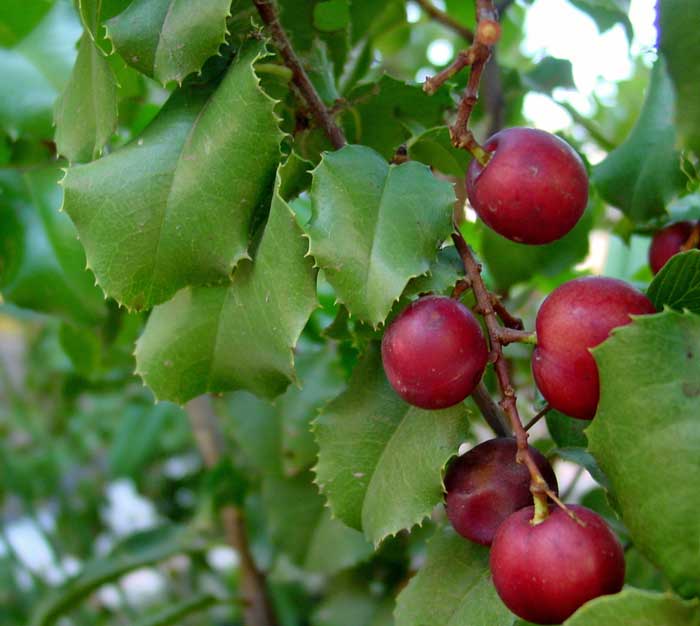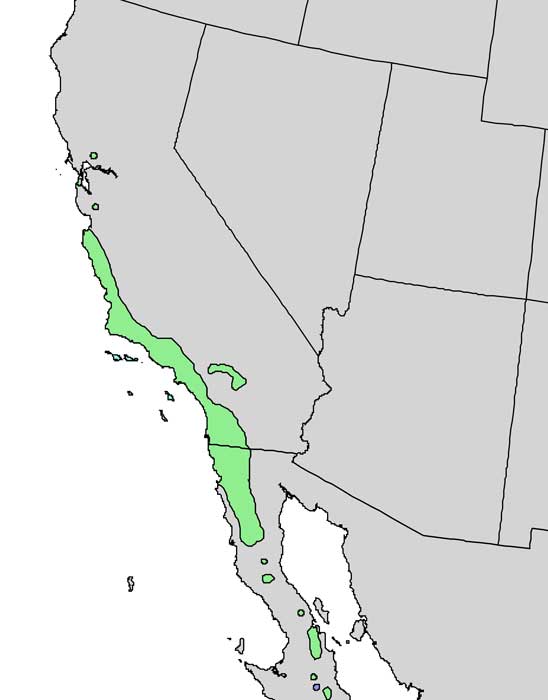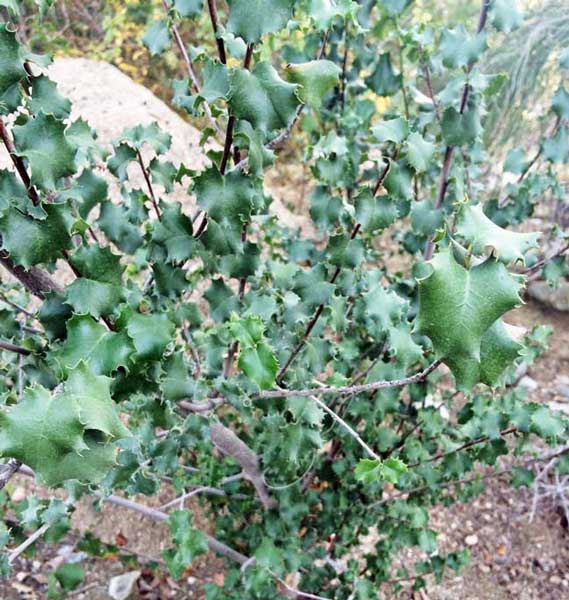Ethnobotany of southern California native plants:
HollyLeaf Cherry (Prunus ilicifolia)

credit: NoahElhardt (assumed) CC BY-SA 2.5, via Wikimedia Commons
Healthy looking fruits from this prized Prunus species.

The geographic range of hollyleaf cherry.
HollyLeaf Cherry (Prunus ilicifolia)
Hollyleaf Cherry is a shrubby, evergreen tree that produces edible berries. However, it should be noted that the seeds of this plant are very toxic. They should be avoided. Native American only ate the kernels from this shrub after leaching out certain chemicals.
The plant is native to California and is also found just outside the state’s borders. Hollyleaf cherry grows comfortably in chaparral, desert and woodland biomes. Much like other holly species, this plant features shiny and spiny-toothed leaves. Due to its general hardiness and its charismatic fruits and leaves, this plant is now a favorite ornamental shrub. You can find this holly growing in gardens throughout California.
Applications for the Hollyleaf Cherry
Among Native American tribes, the hollyleaf cherry was the most coveted species within the Prunus genus. Early settlers collected ripe fruit from this plant then fermented the fruit into an alcoholic beverage.
The Cahuilla prepared an atole from the hollyleaf cherry. The inside of the seed, the kernel, was first extracted and crushed in a mortar. The powder was then leached to remove the harmful chemicals. The remains were boiled into an atole. This meal was considered a prized food source, a great delicacy.
The Kumeyaay people of the San Diego area were also very fond of the hollyleaf cherry. They collected the shiny leaves then prepared an infusion of the leaves to use as a cough medicine. They also ate ripe fruits right off the shrub.
The Coastanoan and Kumeyaay people also prepared the kernels of this plant. They soaked and roasted the inner seed to create a powder meal. This meal was shaped into patties then roasted on charcoals.
The Luiseno people near the Los Angeles area used the fruit kernel to make a porridge type food. They dried the kernels in the sun then cooked the mush in an earthen pot.
The wood from this holly was durable and made a good source for bow-making.

The shiny, serrated leaves of the hollyleaf cherry in the winter.
Looking for a book that will connect you with the wild elements of this planet?
Here’s my recommended reading list.
Warning: All of my books contain a botany, ethnobotany or drug discovery component.
References:
Hinton, Leanne 1975 Notes on La Huerta Diegueno Ethnobotany. Journal of California Anthropology 2:214-222 (p. 217)
Romero, John Bruno 1954 The Botanical Lore of the California Indians. New York. Vantage Press, Inc. (p. 18)
Please return to our main Ethnobotany of southern California page.
On our main ethnobotany page, we present a clickable list of the southern California native plants that became a part of the culture of Native Americans and early European settlers. These plants were used for medicine, food, shelter, drink, tools and art.
Warning: The information about plants on this website is intended for general educational purposes only. The author of this website accepts no responsibility for problems arising from the user’s misidentification, misuse, or use of plants. Please read the full TERMS associated with this website.
